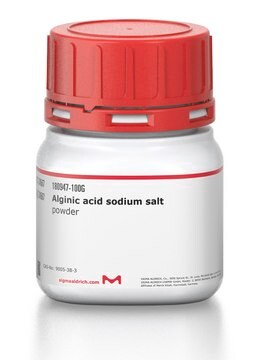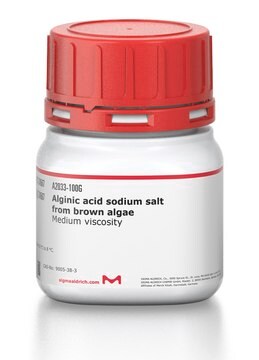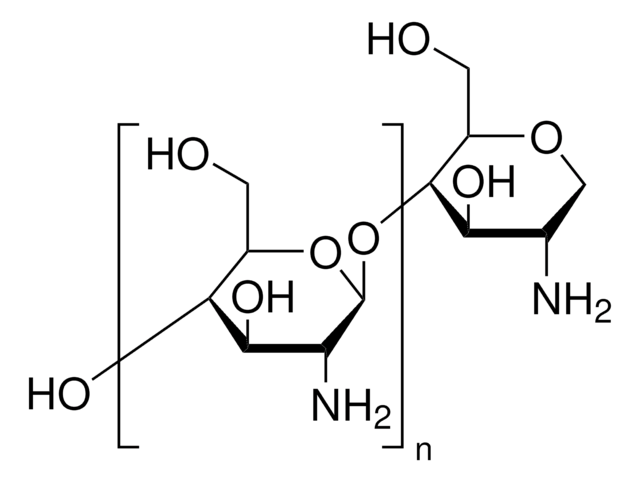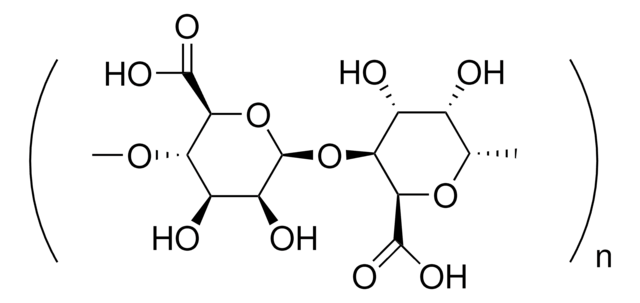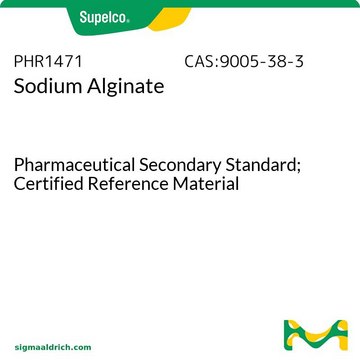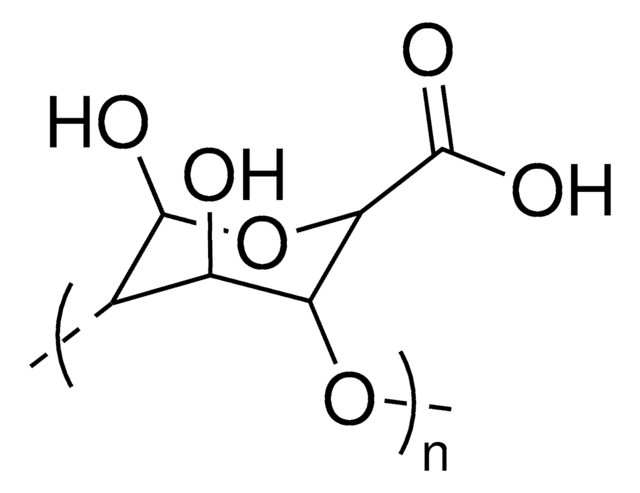A1603
Alginate Lyase
powder, ≥10,000 units/g solid
Synonym(s):
poly-beta-D-mannuronate lyase
Sign Into View Organizational & Contract Pricing
All Photos(2)
About This Item
CAS Number:
MDL number:
UNSPSC Code:
12352204
NACRES:
NA.54
Recommended Products
General description
Alginate lyases is present in several marine algae, marine mollusks and a vast range of marine and terrestrial bacteria.
Application
Alginate Lyase has been used:
- in the pre-processing of enzyme
- to de-encapsulate cells
- to digest Pseudomonas exopolysaccharide to facilitate electroporation
Alginate Lyase is used to break down alginate or alginic acid and to reduce viscosity. It is useful during follicle isolation, encapsulation, and culture .
Biochem/physiol Actions
Alginate lyases actively participates in the saccharification of the acidic polysaccharides for the production of bioethanol.
Breaks down alginate or alginic acid to smaller molecules and reduces viscosity.
Unit Definition
One unit will produce an increase the A235nm of 1.0 per minute per mL of sodium alginate solution at pH 6.3 at 37 °C
Preparation Note
Add 0.15 mI of enzyme solution (1 un/ml) to 4.5 ml of 0.1% sodium alginate (pH 6.3). Incubate at 37 °C for 30 minutes. Terminate reaction by addition of 4.65 ml of 0.1 N NaOH.
Other Notes
View more information on enzymes for complex carbohydrate analysis at www.sigma-aldrich.com/enzymeexplorer
Signal Word
Danger
Hazard Statements
Precautionary Statements
Hazard Classifications
Resp. Sens. 1
Storage Class Code
11 - Combustible Solids
WGK
WGK 1
Flash Point(F)
Not applicable
Flash Point(C)
Not applicable
Personal Protective Equipment
dust mask type N95 (US), Eyeshields, Gloves
Certificates of Analysis (COA)
Search for Certificates of Analysis (COA) by entering the products Lot/Batch Number. Lot and Batch Numbers can be found on a product’s label following the words ‘Lot’ or ‘Batch’.
Already Own This Product?
Find documentation for the products that you have recently purchased in the Document Library.
Customers Also Viewed
W Hashimoto et al.
Journal of bacteriology, 182(16), 4572-4577 (2000-07-27)
A bacterium, Sphingomonas sp. strain A1, can incorporate alginate into cells through a novel ABC (ATP-binding cassette) transporter system specific to the macromolecule. The transported alginate is depolymerized to di- and trisaccharides by three kinds of cytoplasmic alginate lyases (A1-I
Shinji Sakai et al.
Biomaterials, 33(28), 6721-6727 (2012-07-10)
We report a method for wrapping tissues with a pre-established cage-like layer composed of living cells. We encapsulated multicellular aggregates of human hepatoma HepG2 cells as a model of tissues such as pancreatic islets and hepatocyte spheroids in alginate-based hydrogel
Elizabeth M Parrish et al.
Reproduction (Cambridge, England), 142(2), 309-318 (2011-05-26)
Ovarian follicle maturation results from a complex interplay of endocrine, paracrine, and direct cell-cell interactions. This study compared the dynamic expression of key developmental genes during folliculogenesis in vivo and during in vitro culture in a 3D alginate hydrogel system.
Bacteriophages phi MR299-2 and phi NH-4 Can Eliminate Pseudomonas aeruginosa in the Murine Lung and on Cystic Fibrosis Lung Airway Cells
Alemayehu D, et al.
mBio, 3(2) (2012)
François Thomas et al.
Environmental microbiology, 14(9), 2379-2394 (2012-04-20)
Alginate constitutes a significant part of seaweed biomass and thus a crucial nutrient for numerous marine heterotrophic bacteria. However, the mechanisms for alginate assimilation remain largely unknown in marine microorganisms. We show here that the genome of the marine flavobacterium
Our team of scientists has experience in all areas of research including Life Science, Material Science, Chemical Synthesis, Chromatography, Analytical and many others.
Contact Technical Service